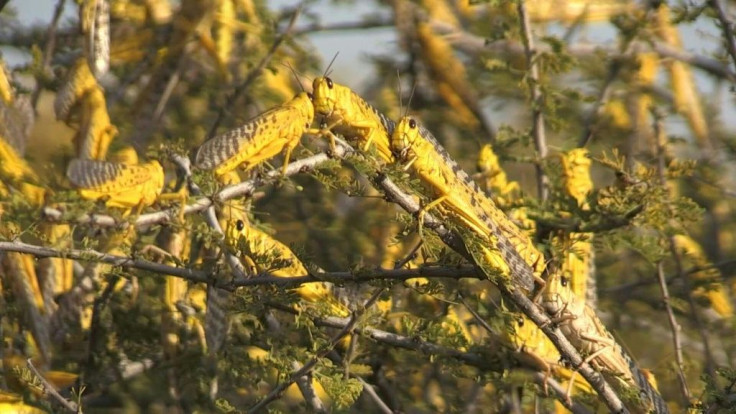NASA Using Satellites To Stop Locust Swarms Invading Africa

KEY POINTS
- Locust swarms have been destroying croplands in Africa
- Populations of locusts could increase rapidly due to the rainy season
- NASA will use its satellites to identify the locusts' spawn regions
NASA is joining the fight against the destructive locust swarms that are currently ravaging across Africa. According to the agency, it will use its satellites to help stop the spread of the invasive insects.
For the past couple of months, Africa has been suffering through an invasion caused by locusts. Since these insects target crops, their presence has been a huge problem for the food supply of millions of people in the region.
Although swarms of locusts are pretty common in Africa, their populations started to get out of hand in December last year. According to reports by the United Nations (UN), unusual climate conditions have triggered the locusts to reproduce rapidly. Due to their large numbers, about 173,000 acres of cropland in Kenya were destroyed by the locusts, Space.com reported.
With the rainy season approaching, experts believe the problem with the locusts in Africa will only get worse in the next couple of months. If the locust population in Africa becomes even bigger, it could trigger a national food shortage problem in the region.
As a possible solution to this growing issue, NASA’s SERVIR team, which helps improve environmental policies for the U.S. Agency for International Development using satellite data, has partnered with the U.N. to help stop the spread of the locusts.
According to NASA, it will use its Earth-observing satellites to monitor vegetation and soil moisture from space. The agency explained that identifying these regions is vital since locusts prefer to lay their eggs in warm and wet soil. They also need vegetation to sustain infant locusts.
By identifying the potential spawning regions of the locusts, NASA and its partners can then implement the measures need in order to prevent another massive swarm attack from happening.
“Our goal is to learn from [U.N.’s Food and Agriculture Organization] how to find out where the breeding grounds are,” Lee Ellenburg, the food security and agriculture head for SERVIR said in a statement. “If the prevailing conditions indicate that locusts will hatch and be taking off, the goal is to go early and destroy their nesting grounds.”
© Copyright IBTimes 2024. All rights reserved.





















